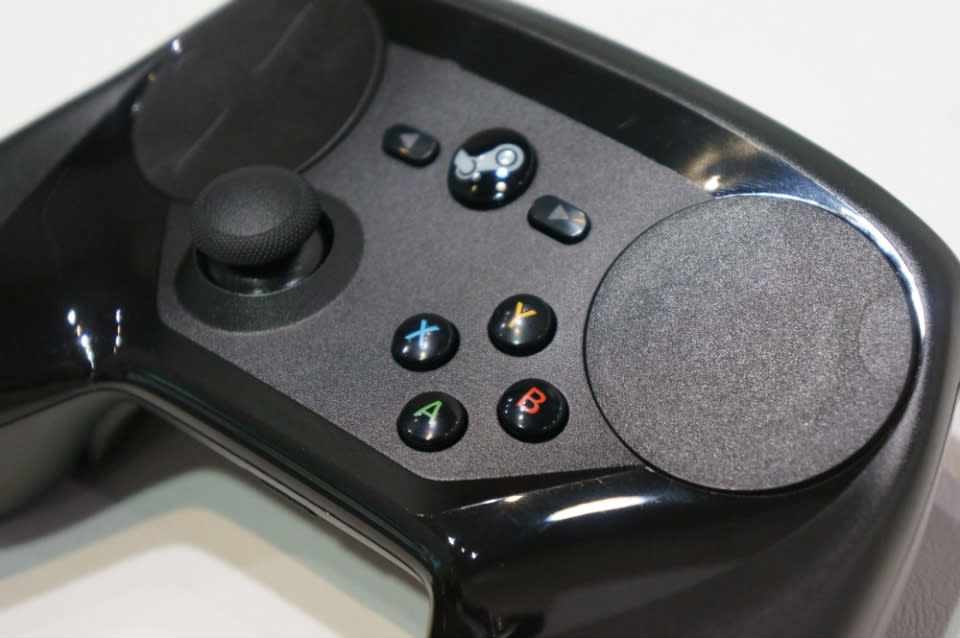Valve's final Steam Controller is still missing something

I spent roughly 10 minutes with the final Steam Controller at GDC 2015, playing snippets of Middle-earth: Shadow of Mordor, The Talos Principle and Unreal Tournament on various Steam Machines. The body of the controller is wonderful to hold. Two long, clickable pads running along the backside of the handles, right where a player's middle and ring fingers lie, would be a welcome addition to any existing gamepad. Plus, the final controller adds a single analog stick on the left side. This makes the design more familiar overall, but with a trackpad replacing a second analog stick, the final Steam Controller remains what it always has been: awkward.
The final Steam Controller will ship alongside Steam Machines in November, and it's gone through a few designs since its announcement in 2013. First it had no analog sticks at all, instead featuring two trackpads with haptic feedback meant to simulate the precision of traditional mouse movement, but which ended up feeling unnatural. Valve ran with the trackpads for its second iteration, adding new buttons that couldn't overcome the hardware's odd ergonomics. The final Steam Controller includes two trackpads, but the new analog stick offers a throwback to traditional gamepad design.
The two pads along the back of the handles are the gem of Steam's Controller -- even though I didn't actually need them during my demos. For complex games such as Dragon Age: Inquisition or MOBAs considering controller support (I'm looking at you, League of Legends), the Steam Controller offers a lot of range, with six buttons along the back and shoulders; two large, clickable trackpads on the face; plus an analog stick; and standard A, X, Y and B buttons. The back pads are removable as part of the battery case, housing two AA batteries (the final controller is, of course, wireless).

My main issue with the Steam Controller is with the right side -- the action buttons are positioned where the second analog stick would usually reside, with the trackpad above. Historically, gamepads have trained players to control movement along the bottom of the controller, and to jump up to the action buttons. The Steam Controller reverses this instinct, and it's not something I could overcome in the time I played with it. This disconnect made tutorial stages of The Talos Principle, a philosophical puzzle game, frustrating, as my character walked clumsily around the environment, taking seconds longer than usual to pick up objects and activate them.
It's not that I want a second analog stick. I'm into the idea of trackpads and I think they could be an amazing addition to controllers going forward, if the kinks are worked out. It's the placement of the trackpads and the action buttons that makes Valve's final Steam Controller problematic. This could be an issue resolved by practice, practice, practice, re-training my fingers to move down rather than up and vice versa. Still, it's an odd design choice and an extra hurdle for players to overcome when picking up Valve's brand-new hardware in November.
Don't miss out on all the latest from GDC 2015! Follow along at our events page right here.

















